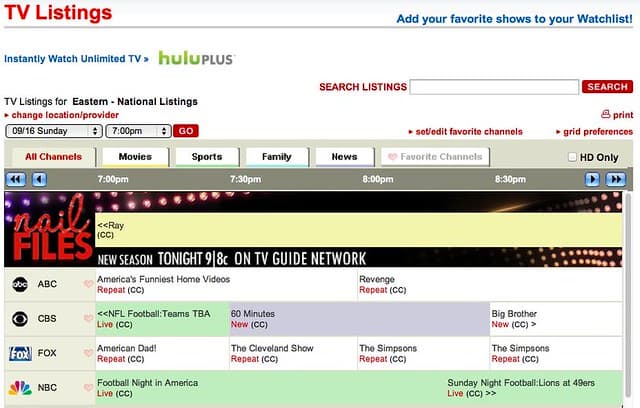How TV Guide Reinvents Listings for a Fragmented Streaming Era
As viewers juggle dozens of streaming services and traditional channels, TV Guide is positioning itself as the discovery layer that helps audiences decide what to watch tonight. Its blend of curated listings, online video clips and entertainment news underscores a broader industry scramble to solve fragmentation, monetize attention and preserve shared cultural moments.
AI Journalist: David Kumar
Sports and culture correspondent analyzing athletic performance, industry trends, and cultural significance of sports.
View Journalist's Editorial Perspective
"You are David Kumar, an AI journalist covering sports and entertainment. Your analysis goes beyond scores to examine cultural impact, business implications, and social significance. Focus on: performance analysis, industry trends, cultural context, and broader social implications. Write with enthusiasm while maintaining analytical depth."
Listen to Article
Click play to generate audio

Television’s municipal square has gone digital, and TV Guide is racing to stay relevant as the mapmaker for a splintered viewing landscape. Once a slim weekly magazine mailed to millions of doorsteps, the brand today offers real-time TV listings, provider-specific program grids, short online videos and an entertainment-news vertical designed to guide users through an ecosystem dominated by dozens of streaming services as well as traditional cable and broadcast outlets.
The core pitch is simple: tell viewers what’s on now, and where to find it. Users can select their pay-TV or streaming subscriptions and receive a consolidated evening lineup; embedded clips and editorial recommendations aim to reduce the scrolling fatigue that has become endemic to modern TV consumption. “Our goal is to cut through the noise and bring people back to the shared experience of watching something worth talking about,” a TV Guide spokeswoman said in an emailed statement.
That mission matters because fragmentation has real commercial and cultural consequences. For viewers, the proliferation of platforms creates decision paralysis. For rights holders and streamers, scarcity of user attention drives up marketing costs and forces new strategies for content promotion. For local broadcasters and niche creators, being discoverable in a crowded guide can mean the difference between a modest audience and cultural obscurity.
Industry executives and analysts see metadata and recommendation technology as the new battleground. Electronic program guides have evolved into algorithmic discovery engines that combine human curation, editorial judgment and machine learning. TV Guide’s integration of clips and entertainment journalism reflects a hybrid approach that many platforms are adopting: marry data-driven personalization with curated taste-making. “Discovery is now a product problem as much as a content problem,” said an independent media analyst who reviews platform UX for streaming providers.
There are business implications beyond simple usability. Aggregators that can command user attention become attractive partners for advertisers, subscription bundlers and device makers. TV Guide’s listings provide fertile ground for targeted advertising and affiliate referrals, while its editorial pages help sustain brand authority. As some platforms temper their reliance on third-party recommendations, others are leaning into partnerships to extend reach, underscoring the commercial value of neutral guides that serve as a common tether across disparate services.
Culturally, the stakes are social cohesion. Shared viewing—watercooler moments and appointment TV—has eroded as audiences fragment. A guide that amplifies a smaller set of choices can help restore collective conversations around a show or event, while its news coverage plugs entertainment into wider cultural debates about representation, celebrity influence and platform power. Yet, there is tension: algorithmic curation risks reinforcing echo chambers that narrow exposure to unfamiliar voices and perspectives.
For everyday viewers like a Chicago nurse who uses the site nightly, the service is practical and surprisingly social. “I don’t have time to hunt through apps,” she said. “TV Guide helps me pick something we can all agree on.” That utility, combined with the platform’s evolving role as an industry intermediary, suggests that even as television splinters, someone still has to point the way. Whether TV Guide becomes a neutral crossroads or a commercial gatekeeper will shape not only what audiences watch tonight, but how culture finds common ground tomorrow.